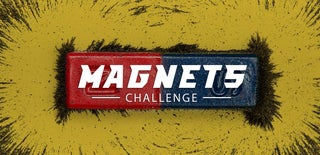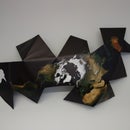Introduction: Magnetic Dish Scrubber
This project was designed to solve the eternal problem of scrubbing those hard to reach places. Your over-sized hands just cannot get to the bottom of those narrow mojito glasses, or the smoothie residue in your bottles. The solution is to drop one of these magnet-cored cubes into the vessel and use a separate powerful magnet on the outside to travel to gummy spots and scrape the gunge off in the process.
I designed the cubes in Tinkercad, and printed them at home using my 3D printer using food-safe filament. This was one of my first ground-up design and executions, and it shows how quickly you can get from idea to viable product with the right tools.
Step 1: Items
I have an Anycubic I3 which is has been a very good machine for me (minus 3 troubleshooting sessions). 3D printing has become quite a bit more affordable in the last couple years (Amazon Link), and I finally joined the club this last Christmas. I've been making some cookie cutters for my sister so I had some food-safe PLA at my disposal. Apparently there is a huge debate about the safety of PLA for food, go ahead and google it and make up your own mind. I am not worried, and use these underwater and give everything a good rinse before storing them. I also have a 3d pen like this one.
The magnets I have are from Ali Express and are incredibly powerful for the cost. They are exactly 10mm in all three dimension, making the design process much easier.
Step 2: TinkerCad Design
Tinkercad is a very user friendly cloud based tool to design 3d shapes. I completed the walk through tutorial and I was off the the races. My first designs were sub-optimal (too thick walls and poorly connected triangles, see images notes for examples). In the end I made 4 separate geometries to test the most effective scrubbing shapes. I created solid cubes that were 14mm across and 9mm high so that my 10mm magnet had a 2mm edge. The extra height meant that the geometries carved in the top had enough depth to not intrude into the "magnet chamber".
I created spikes using an extended hexagon, that was choped off with a wedge shape. All four halves were then clipped for the magnet with a separate set of empty cubes 10mm x 10mm x 5mm. See the notes in the images.
Step 3: Printing Settings
The default software that comes with Anycubic printers is Cura. I didn't make any changes to the settings except to add a brim to get the snot off the nozzle before getting to the real work. My nozzle is 0.4mm and layer height was set to 0.1mm. STL file attached.
Attachments
Step 4: Printing
The beauty of 3d printing, is the ease with which to fail and start over. My first had walls that were too thick, which was quickly modified in Tinkercad and restarted.
Step 5: Weld Shut
Before sealing the magnet, make sure you have the polarity correct... They have a top and bottom and 'neutral' sides. See the first image for what I should have done to test. My sideways cube still works, but not quite as intended.
I used a 3D pen to fuse the 2 sides together and make sure the magnet is securely isolated from any food stuff. This was easier than expected. I purged the previously used PLA from the pen and ran the food safe pla for a few centimeters. I then carefully ran the hot tip of the pen over the crack and fill the trough with new hot PLA. I shaved off the excess PLA with a pocket knife.
Step 6: Final Product
I cut a small section of scrubby pad and stretched it over the spikes designed for this. You are done!
This was a fun project simply as a proof to me that I could get to a minimum viable product in a very short time. It also works great to get those pesky grunge spots out of our glasses and bottles. Please leave comments and questions and I will try to get back to you quickly.

Participated in the
Magnets Challenge












